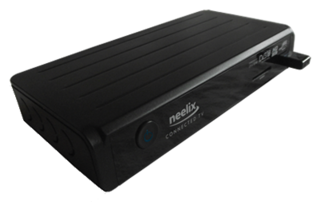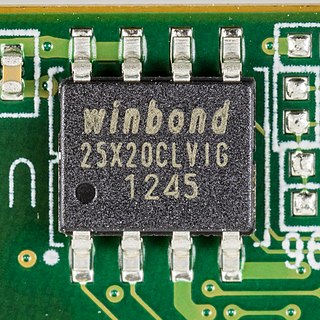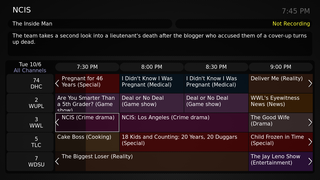Products
UpdateTV
UpdateTV is a multipath worldwide distribution system which allows digital televisions to automatically receive firmware upgrades and software patches sent out via terrestrial broadcast, digital cable networks, and the Internet. The network and technology has been under development by UpdateLogic since 2004, was completed in 2006, first shipped in TV sets in 2008 by Sony Electronics, and is now shipped in TVs from Sanyo and others.
In the terrestrial case, the UpdateTV solution which works within the ATSC A/97 (Software Data Download Service, or SDDS) protocol, will be datacast by National Datacast on PBS TV stations across the United States. Major cable operators are required by contract to transmit the data such that the software upgrades are also passed to their customers. UpdateLogic works with content delivery network providers, or Internet service providers, to download the software update(s) to connected devices.
TV manufacturers work with UpdateLogic to schedule the network distribution of the software patch(es) and optimize the roll-out to ensure the TVs receive it. The upgrades are transmitted repeatedly every day over a period of many months, in part so that the update is not missed due to a power outage, being unplugged (such as to prevent lightning damage while a resident is away, or perhaps being in storage), or due to data corruption or data loss caused by interference or weak signal strength in rural areas or mountainous terrain - which only occurs in the terrestrial broadcast distribution. UpdateTV does ask the user to give consent to install the software on their TV. There is no charge to the consumer for installing an update.
Software updates for television sets have fixed issues with video resolution, format compatibility, channel changing speed, V-chip ratings, user interface, timer controls, and more.
UpdateTV is enabled on silicon chip set solutions from Broadcom, AMD, Zoran and others.
The UpdateTV network can deliver updates to many types of devices - not just television sets. Devices such as Blu-ray players, mobile/handheld TVs, set-top boxes and gaming consoles are capable of using the service - since they are connected to the Internet, a cable network, and/or a digital TV antenna.

Cable television is a system of delivering television programming to consumers via radio frequency (RF) signals transmitted through coaxial cables, or in more recent systems, light pulses through fibre-optic cables. This contrasts with broadcast television, in which the television signal is transmitted over-the-air by radio waves and received by a television antenna attached to the television; or satellite television, in which the television signal is transmitted over-the-air by radio waves from a communications satellite orbiting the Earth, and received by a satellite dish antenna on the roof. FM radio programming, high-speed Internet, telephone services, and similar non-television services may also be provided through these cables. Analog television was standard in the 20th century, but since the 2000s, cable systems have been upgraded to digital cable operation.

Digital television (DTV) is the transmission of television signals using digital encoding, in contrast to the earlier analog television technology which used analog signals. At the time of its development it was considered an innovative advancement and represented the first significant evolution in television technology since color television in the 1950s. Modern digital television is transmitted in high-definition television (HDTV) with greater resolution than analog TV. It typically uses a widescreen aspect ratio in contrast to the narrower format (4:3) of analog TV. It makes more economical use of scarce radio spectrum space; it can transmit up to seven channels in the same bandwidth as a single analog channel, and provides many new features that analog television cannot. A transition from analog to digital broadcasting began around 2000. Different digital television broadcasting standards have been adopted in different parts of the world; below are the more widely used standards:

A set-top box (STB), also known as a cable box or receiver and historically television decoder, is an information appliance device that generally contains a TV-tuner input and displays output to a television set and an external source of signal, turning the source signal into content in a form that can then be displayed on the television screen or other display device. They are used in cable television, satellite television, and over-the-air television systems as well as other uses.

In computing, firmware is a specific class of computer software that provides the low-level control for a device's specific hardware. Firmware, such as the BIOS of a personal computer, may contain basic functions of a device, and may provide hardware abstraction services to higher-level software such as operating systems. For less complex devices, firmware may act as the device's complete operating system, performing all control, monitoring and data manipulation functions. Typical examples of devices containing firmware are embedded systems, home and personal-use appliances, computers, and computer peripherals.

Digital Video Broadcasting (DVB) is a set of international open standards for digital television. DVB standards are maintained by the DVB Project, an international industry consortium, and are published by a Joint Technical Committee (JTC) of the European Telecommunications Standards Institute (ETSI), European Committee for Electrotechnical Standardization (CENELEC) and European Broadcasting Union (EBU).

A cable television headend is a master facility for receiving television signals for processing and distribution over a cable television system. A headend facility may be staffed or unstaffed and is typically surrounded by some type of security fencing. The building is typically sturdy and purpose-built to provide security, cooling, and easy access for the electronic equipment used to receive and re-transmit video over the local cable infrastructure. One can also find head ends in power-line communication (PLC) substations and Internet communications networks.
Hybrid fiber-coaxial (HFC) is a broadband telecommunications network that combines optical fiber and coaxial cable. It has been commonly employed globally by cable television operators since the early 1990s.
Streaming television is the digital distribution of television content, such as television shows and films, as streaming media delivered over the Internet. Streaming television stands in contrast to dedicated terrestrial television delivered by over-the-air aerial systems, cable television, and/or satellite television systems.
Pirate decryption is the decryption, or decoding, of pay TV or pay radio signals without permission from the original broadcaster. The term "pirate" is used in the sense of copyright infringement. The MPAA and other groups which lobby in favour of intellectual property regulations have labelled such decryption as "signal theft" even though there is no direct tangible loss on the part of the original broadcaster, arguing that losing out on a potential chance to profit from a consumer's subscription fees counts as a loss of actual profit.

Internet Protocol television (IPTV) is the delivery of television content over Internet Protocol (IP) networks. This is in contrast to delivery through traditional terrestrial, satellite, and cable television formats. Unlike downloaded media, IPTV offers the ability to stream the source media continuously. As a result, a client media player can begin playing the content almost immediately. This is known as streaming media.
Datacasting is the broadcasting of data over a wide area via radio waves. It most often refers to supplemental information sent by television stations along with digital terrestrial television (DTT), but may also be applied to digital signals on analog TV or radio. It generally does not apply to data inherent to the medium, such as PSIP data that defines virtual channels for DTT or direct broadcast satellite system, or to things like cable modems or satellite modems, which use a completely separate channel for data.

Electronic programming guides (EPGs) and interactive programming guides (IPGs) are menu-based systems that provide users of television, radio and other media applications with continuously updated menus that display scheduling information for current and upcoming broadcast programming. Some guides also feature backward scrolling to promote their catch up content. They are commonly known as guides or TV guides.

Dreambox is a series of Linux-powered DVB satellite, terrestrial and cable digital television receivers, produced by German multimedia vendor Dream Multimedia.
Guide Plus+, TV Guide On Screen, TV Guide Daily, TV Guide Plus+ and Guide Plus+ Gold or G-Guide are brand names for an interactive electronic program guide (EPG) system that is used in consumer electronics products, such as television sets, DVD recorders, personal video recorders, and other digital television devices. It offers interactive on-screen program listings that enable viewers to navigate, sort, select and schedule television programming for viewing and recording. The differing names are only used for marketing purposes – the entire system is owned by Rovi Corporation, the successor to Gemstar-TV Guide International. In 2016, Rovi acquired digital video recorder maker TiVo Inc., and renamed itself TiVo Corporation.
Digital terrestrial television in Australia commenced on 1 January 2001 in Sydney, Melbourne, Brisbane, Adelaide and Perth using DVB-T standards. The phase out of analogue PAL transmissions began on 30 June 2010 and was completed by 10 December 2013.

A free-to-air or FTA Receiver is a satellite television receiver designed to receive unencrypted broadcasts. Modern decoders are typically compliant with the MPEG-2/DVB-S and more recently the MPEG-4/DVB-S2 standard for digital television, while older FTA receivers relied on analog satellite transmissions which have declined rapidly in recent years.
A Web-to-TV installation provides a way to show streaming television or other over-the-top content from the Internet, to a television set. Various technologies to do this include Home theater PCs, digital media receivers, and Smart TVs.
A smart TV, also known as a connected TV (CTV), is a traditional television set with integrated Internet and interactive Web 2.0 features that allow users to stream music and videos, browse the internet, and view photos. Smart TVs are a technological convergence of computers, televisions, and digital media players. Besides the traditional functions of television sets provided through traditional broadcasting media, these devices can provide access to over-the-top media services such as streaming television and internet radio, along with home networking access.
An over-the-top (OTT) media service is a media service offered directly to viewers via the Internet. OTT bypasses cable, broadcast, and satellite television platforms—the mediums through which companies have traditionally acted as controllers or distributors of such content. It has also been used to describe no-carrier cellphones, for which all communications are charged as data, avoiding monopolistic competition, or apps for phones that transmit data in this manner, including both those that replace other call methods and those that update software.









